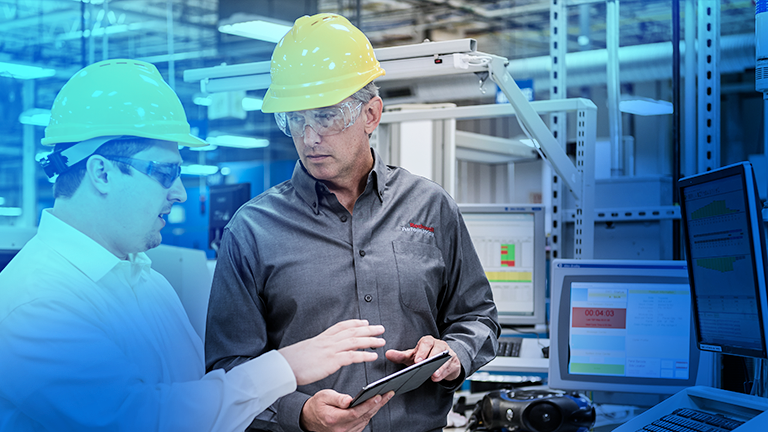Smart manufacturing is all about the latest technology—the Industrial Internet of Things (IIoT), artificial intelligence (AI), digital twins, digital threads, manufacturing execution systems (MES), augmented reality (AR), virtual reality (VR), additive manufacturing, cobots, cloud computing, edge computing and many more. Thanks to these technologies, and the best practices advocated by smart manufacturing, manufacturing industries are being transformed back into an economic powerhouse.
Smart manufacturing isn’t just about these technologies; it’s also about what manufacturers can do with the technologies. One important capability of smart manufacturing is it can help drive sustainability and create sustainable manufacturing processes. In fact, before the advent of smart manufacturing and these smart technologies, the idea of creating truly sustainable manufacturing processes was probably nothing more than wishful thinking. But now, with smart manufacturing and the latest technologies, it’s possible to create truly sustainable manufacturing processes. To do so, manufacturers must first focus their smart manufacturing efforts and technologies on several key areas.
Energy Consumption
Energy consumption in manufacturing tends to vary widely based on various environmental, equipment, process and material variables. Smart manufacturing technologies can help gather the data necessary to understand exactly when, where and why companies are consuming energy—especially why, in some cases, they consume drastically more energy than other cases.
Companies also must take concrete and significant steps to reduce energy consumption by replacing old equipment and old processes, upgrading equipment and upgrading processes. Most importantly, they need to train their people to understand how their actions, the way they run equipment and the way they run the processes impact energy consumption—all with the idea in mind of significantly reducing energy consumption across the board.
Waste Management
Many manufacturing facilities are embarking on efforts to generate zero waste. This is a lofty goal and can only be achieved through the technologies of smart manufacturing. And even if the goal can’t be zero waste, a significant reduction in waste is always possible. But, manufacturers must gather the data on when, where and why the waste is occurring and then take concrete steps to minimize or eliminate the waste.
New processes and new equipment will be large contributors. But so will modifying processes and equipment to better handle rework, operate at tighter tolerances and minimize waste from changeovers. And just as they do with energy consumption, companies also must train their people to understand the impact their roles and actions have on the generation of waste.
Operational Safety
Manufacturers may not necessarily think of operational safety as part of sustainable manufacturing processes, but it is essential to make sure a manufacturing process is truly sustainable. The processes being performed—and the assets being used—must be operationally safe; otherwise, they’re not sustainable over time.
Companies must have the right people with the right skills for the job. They must use safe work practices and achieve compliance with policies, procedures and regulations. They must ensure that all processes are intrinsically safe and immediately address and correct any unsafe conditions. Personnel must perform regular maintenance of all assets and always correct identified failures.
Personnel Health
Manufacturers must also think of the long-term health of their people working in manufacturing operations. Even if the processes are operationally safe, it doesn’t mean that long-term personnel health is ensured. They must ensure that all tasks are ergonomically safe and sound. For instance, they should eliminate tasks that might cause sudden or sustained exposure to force, vibration, repetitive motion or awkward postures—all of which can impact the long-term health of their people. People should always be a top priority, and companies should constantly look for ways to redesign equipment and processes in ways that promote safety, better habits and better conditions.
Environmental Impact
Many manufacturing operations strive for zero emissions and zero environmental impact. These are difficult, if not impossible, goals to achieve throughout manufacturing operations—and especially throughout the supply chain. But that doesn’t mean companies can’t strive to get as close to zero as possible.
Again, manufacturers must gather and analyze data on where, when and why they are having an environmental impact. They must be willing to change their processes, replace their equipment and retrain their people to minimize the environmental impact. Nothing should be off the table when it comes to minimizing the environmental impact. They should continually focus and refocus their efforts to drive their environmental impact as close to zero as possible.
Manufacturing Cost
Manufacturers might think it will cost a lot of money if they focus on building sustainable manufacturing processes by upgrading equipment, improving processes and retraining people. But in fact, over the long term, the opposite is true. Sustainable manufacturing processes are cost-effective manufacturing processes because they are all about reducing energy consumption, reducing waste and reducing environmental impact. They’re also about ensuring the safety of their operations and especially their people over the long run.
These efforts translate into sustainable manufacturing processes and cost-effective manufacturing processes. As companies build more sustainable manufacturing processes, they should find these sustainable manufacturing processes are paying for themselves due to lower energy costs, reduced waste and reduced environmental impact. The bonus is a much safer and healthier manufacturing environment for everyone.
Conclusion
Smart manufacturing is having a significant impact on manufacturing industries. Not only can it help drive sustainability, but it can also help create sustainable manufacturing processes. Manufacturers will discover the only way to create sustainable manufacturing processes is by using smart manufacturing technologies. They can reduce energy consumption, minimize waste, provide operational safety, ensure the long-term health of their people, reduce the environmental impact and do it all while lowering their manufacturing costs. Smart manufacturing is truly helping transform manufacturing back into an economic powerhouse.
Sustainability is a complex mandate affecting many areas of operation, and there are many options to find the optimum solutions for each application. Know how to Unlock Continuous Improvement in 3 Key Areas.

